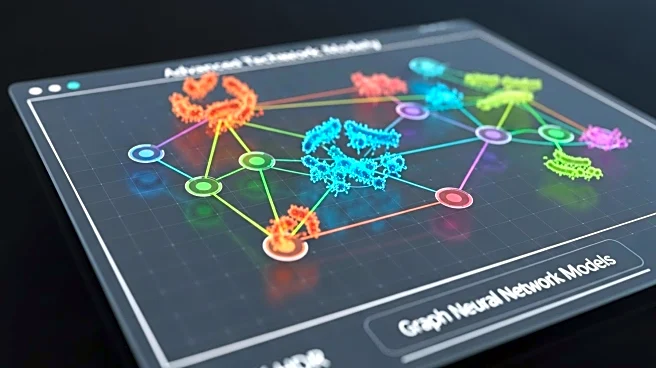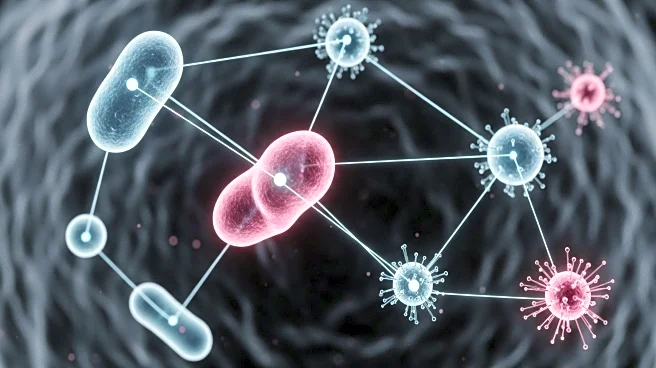What's Happening?
Researchers are utilizing graph neural network models to predict the structure and temporal dynamics of microbial communities in wastewater treatment plants (WWTPs). The study involves analyzing 4709 samples from 24 WWTPs using 16S rRNA amplicon sequencing
to classify Amplicon Sequence Variants (ASVs). The models employ various clustering methods, including biological functions and graph network interaction strengths, to optimize prediction accuracy. The research aims to forecast microbial interactions and abundance patterns, providing insights into the ecological functions of key bacteria involved in wastewater treatment processes.
Why It's Important?
Accurate predictions of microbial community dynamics are vital for optimizing wastewater treatment processes, which are crucial for environmental management and public health. Understanding microbial interactions can lead to improved treatment efficiency and reduced operational costs. The application of graph neural network models in this context demonstrates the potential of advanced computational methods to enhance ecological studies, offering new opportunities for environmental monitoring and management. This research could influence policy decisions related to wastewater treatment and environmental sustainability.
What's Next?
The study suggests further exploration of graph neural network models in other ecosystems, such as human gut microbiota and marine environments, to assess their predictive capabilities across different biological contexts. Researchers may focus on refining model accuracy and exploring additional clustering methods to enhance predictions. The integration of these models into real-world applications could lead to advancements in ecological research and environmental management, with potential implications for industries reliant on microbial processes.
Beyond the Headlines
The use of AI in predicting microbial dynamics highlights the intersection of technology and ecology, raising questions about the role of computational models in understanding complex biological systems. This approach underscores the importance of interdisciplinary research, combining ecological knowledge with advanced computational techniques to address environmental challenges. The study also prompts discussions on the ethical implications of AI in ecological research, particularly regarding data privacy and the potential impact on biodiversity.













